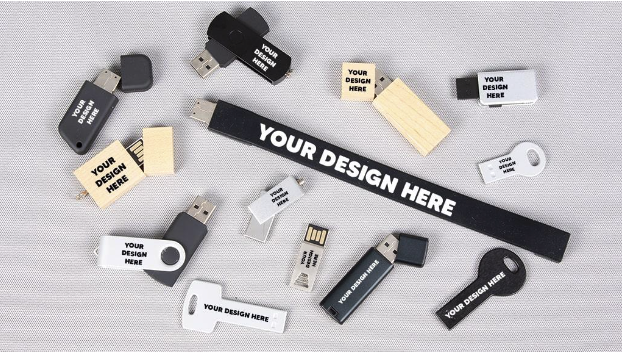In today's tech-savvy world, understanding the differences between USB standards and connectors can be confusing. Two terms that often need clarification are USB 3.1 and USB-C. While they are frequently mentioned together, they are not the same thing. This article aims to clarify the differences between USB 3.1 and USB-C, helping you understand which is better suited for your needs.
USB 3.1 is a data transfer standard that evolved from previous versions like USB 1.0, 2.0, and 3.0. It is known for its high-speed data transfer capabilities and enhanced power delivery features.
USB 3.1 is the latest industry standard for USB data transfer, offering significant improvements over its predecessors. It includes two versions:
USB 3.1 Gen 1: This version provides data transfer speeds of up to 5 Gbps and is essentially the same as USB 3.0.
USB 3.1 Gen 2: This version doubles the transfer speed to 10 Gbps, providing faster data transfer rates.
Data Transfer Speeds: USB 3.1 Gen 2 offers up to 10 Gbps, making it ideal for quickly transferring large files.
Power Delivery: USB 3.1 supports up to 100 watts of power delivery, which is ideal for charging laptops, tablets, and other high-power devices.
Backward Compatibility: USB 3.1 is fully backward compatible with previous USB versions, ensuring it can be used with older devices.
USB 3.1 is widely used in various devices, including external hard drives, personalized flash drives, and key flash drives in bulk. Its high-speed data transfer and power delivery capabilities make it suitable for both personal and professional applications.
USB Type-C, commonly referred to as USB-C, is a physical connector type that has gained popularity for its versatility and ease of use.
USB-C is a new USB connector type characterized by its small, oval shape and reversible design. Unlike older USB connectors, it can be plugged in either way, eliminating the frustration of incorrect orientation.
Reversibility: The USB-C connector is symmetrical and can be plugged in either way, providing a more convenient user experience.
Compatibility: USB-C can support various USB standards, including USB 2.0, 3.0, 3.1, and USB4. This makes it highly versatile and future-proof.
Power Delivery and Video Transmission: USB-C can transmit DisplayPort signals at up to 4K resolution and provide up to 100 watts of power, making it capable of charging high-power devices and supporting high-definition video output.
USB-C is becoming increasingly common in modern devices, including laptops, smartphones, and tablets. It is also used in industrial and commercial applications, providing a universal and versatile connection standard.
The primary difference between USB 3.1 and USB-C is that USB 3.1 is a data transfer standard, while USB-C is a physical connector type. A USB-C port does not automatically mean that the device supports USB 3.1 speeds; depending on the device and cable used, USB-C can support different USB standards.
Understanding these differences is crucial when selecting devices and cables. For example, a device with a USB-C port may only support USB 2.0 speeds if it uses an older standard. Therefore, it is important to check the specifications of both the device and the cable to ensure you get the desired performance.
When selecting a USB-C cable, consider the following factors:
Data Transfer Speeds: Ensure the cable supports the desired USB standard (e.g., USB 3.1 Gen 2 for 10 Gbps).
Power Delivery: Check the cable's power delivery capabilities to ensure it can charge your devices efficiently.
Compatibility: Ensure the cable is compatible with your existing devices and USB ports.
A durable and high-performance USB-C cable, such as the Zendure Supercord Durable USB Cable, is recommended for its strength, fast charging, and convenience. It features a braided design with defense-grade material, certified to withstand over 50,000 bends, and includes a lifetime warranty.
 USB 3.1 and USB-C in Different Scenarios
USB 3.1 and USB-C in Different Scenarios
For personal use, such as transferring files or charging devices, USB-C cables supporting USB 3.1 Gen 2 are ideal. They offer high-speed data transfer and efficient power delivery, making them suitable for many devices, including personalized flash drives and key flash drives in bulk.
The high-speed transfer rates of USB 3.1 Gen 2 are essential in professional settings, such as video editing or data management. USB-C's versatility in supporting various standards and its ability to transmit video signals and power make it an excellent choice for professional applications.
In conclusion, USB 3.1 and USB-C are distinct but complementary technologies. USB 3.1 is a data transfer standard that offers high-speed transfer rates and enhanced power delivery. At the same time, USB-C is a versatile and convenient connector type that supports various USB standards. Understanding their differences is crucial for making informed decisions when purchasing devices and cables. Whether you need high-speed data transfer, efficient charging, or a versatile connector, USB 3.1 and USB-C have unique advantages.
For the best performance, choose USB-C cables that support the latest USB standards, such as USB 3.1 Gen 2. This ensures you get the most out of your devices, whether using personalized flash drives, key flash drives in bulk, or other high-performance peripherals.